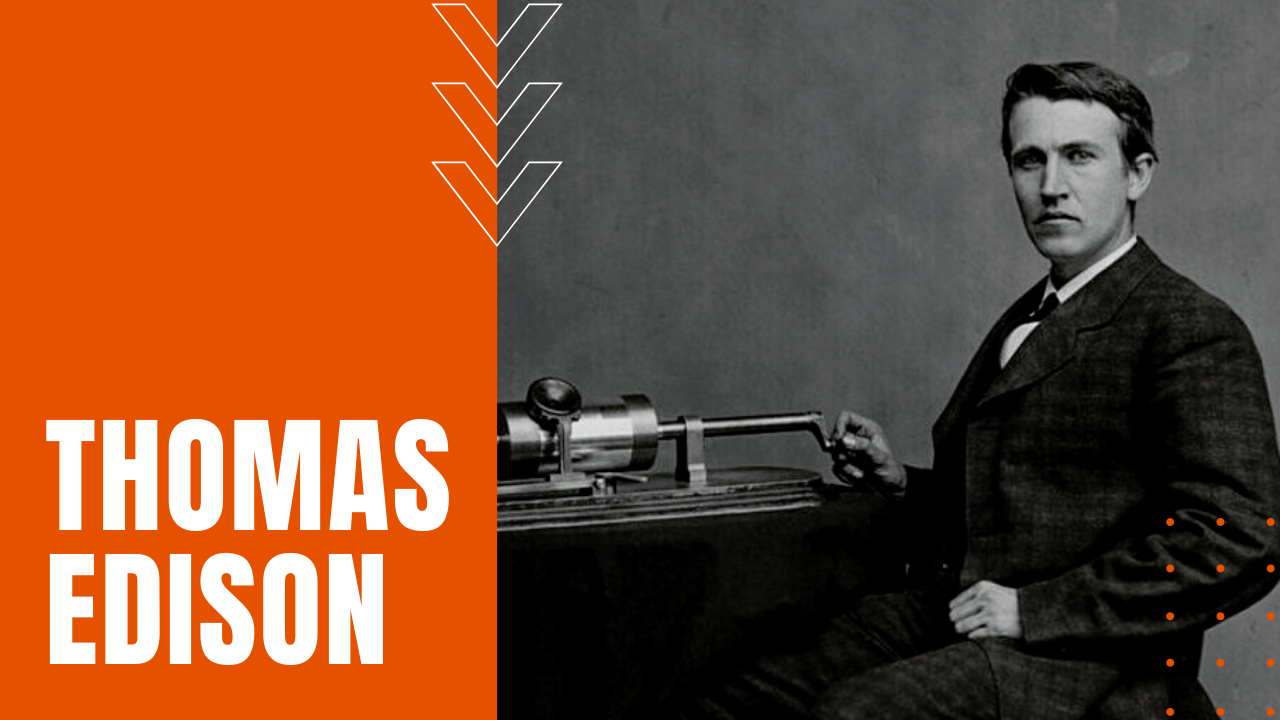Thomas Edison: Wizard of Menlo Park Bio

Born in 1847 Milan Ohio, Thomas Edison left school at age twelve to work on the Grand Trunk Railroad between Detroit and Port Huron Michigan where his impoverished family lived at the time.
Edison’s First Inventions
Despite serious hearing impairment most likely caused by head trauma, during the Civil War, Edison traveled the country working as a telegrapher, at the same time inventing a string of devices intended to boost his ability to hear.
By 1869, he quit telegraphy to become a full-time inventor in Newark New Jersey, where he developed telegraph equipment for the Western Union Telegraph Company and other competitors. After his mother passed away in 1871, Edison married 16-year-old Mary Stillwell, and after he experienced financial difficulties in 1875, with the help of his father, he built his now famous laboratory and machine shop at Menlo Park New Jersey.
The Wizard of Menlo Park
In 1877, Edison invented the carbon transmitter, which boosted both volume and clarity in early telephone technology, followed by his invention of the phonograph, leading the press to nickname the young inventor “the Wizard of Menlo Park.”
A year later, Edison took up the search for an inexpensive and long-lasting incandescent lightbulb to replace the frequent fire dangers caused by gaslight technology—something that scientists and fellow inventors had been struggling to achieve for more than 50 years.
His breakthrough came in October of 1879 with his platinum filament bulb, followed by a carbonized bamboo filament in 1880, forever changing the world as we know it.
Edison Electric Company
In 1881, he moved his wife and three children to New York City, where he set up his Edison Electric Company with funding from J.P. Morgan and the Vanderbilt family. After Edison’s wife Mary passed away in August of 1884, in February of 1886 he married Mirna Miller, before constructing a large estate and research laboratory in West Orange New Jersey, where the couple would raise three additional children.
In his sprawling facility, Edison began developing commercial phonographs, while co-inventing a motion picture camera with William Kennedy Dickson, followed by an early motion picture viewing device called a Kinetoscope, which they patented in 1891. By 1918, after years of legal wrangling in the fledgling motion picture industry, Edison abandoned the technology when he focused on alkaline batteries for self-starting engines, which would later be introduced in Henry Ford’s Model T Ford.
Still working into his early 80s, Edison’s rise from poverty to one of the most recognized men in the world galvanized his legend as the father of the electric age. By his death in 1931 at age 84, he had acquired a record 1,093 patents, making Thomas Edison one of the most impactful inventors in human history.
